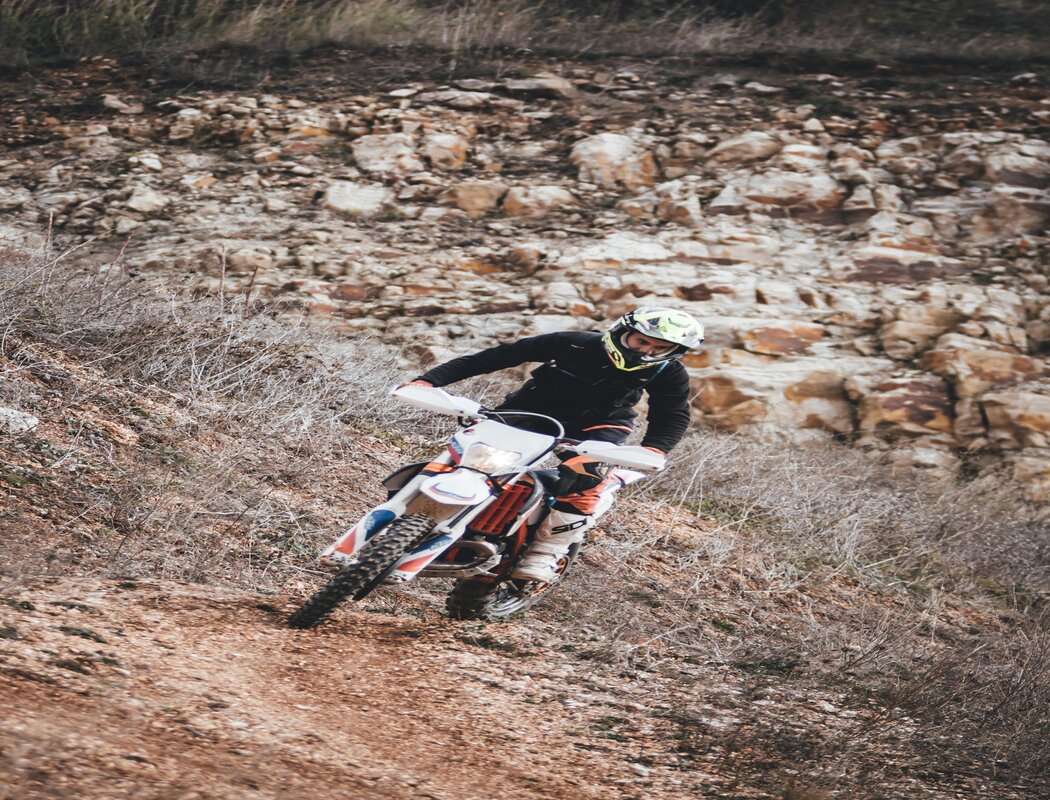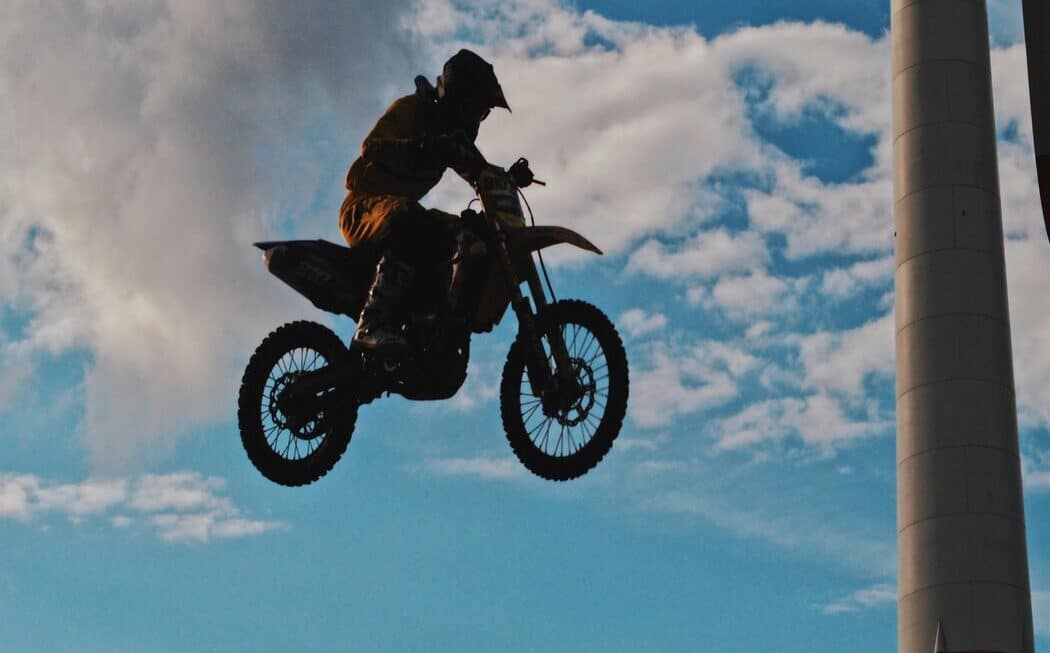For many off-road enthusiasts, the thrill of negotiating rocky paths and rugged terrain is an integral part of dirt bike riding. The challenge that rocks present, whether you’re navigating through boulder-lined trails or scaling steep inclines, is both a test of skill and an opportunity for adrenaline-fueled adventure. But such terrains require a unique set of riding techniques and a thorough understanding of bike handling. In this comprehensive guide, we’ll take a deep dive into how to not only survive but thrive when dirt biking on rocky landscapes.
Choosing the Right Bike Setup
Before hitting the rocks, a rider must ensure their bike is optimized for the challenging terrain. The right bike setup could mean the difference between a controlled ascent and an out-of-control tumble.
Tire Selection
Rocky trails can be unforgiving on tires. Selecting rubber that offers a balance between durability and grip is essential. Tire pressure also needs careful consideration, with lower pressures providing more traction but risking punctures. It’s a delicate balance that riders must find depending on the specific rocks and their bike’s weight and power.
Suspension Adjustments
Adjusting the bike’s suspension to be stiffer can prevent the bike from bottoming out on sharp rocks. Riders should think about increasing the preload, adjusting compression and rebound damping, and even getting a professional tuning for their bike if they are tackling rocks regularly.
Protective Gear
Rocks present a higher risk of collision and impact, so donning the right protective gear is non-negotiable. This includes a full set of body armor, knee braces, and boots that offer robust protection. Investing in gear with significant durability and hard-shell components is wise for rocky terrain.
Riding Techniques on Rocky Terrain
With the bike prepped, the focus shifts to the rider. Techniques here are as much about finesse as they are about power.
Body Positioning
Riders should keep their weight to the rear when tackling rocks to maintain traction on the rear wheel. They should also stay standing on the bike with bent arms and knees, allowing the bike to move beneath them while absorbing much of the potential impact from the rough terrain.
Throttle and Brake Control
Control of the throttle and brakes needs to be almost surgical on rocky ground. Smooth application is key. A sudden twist of the throttle or aggressive use of brakes can lead to loss of traction and control. Learning to modulate these inputs carefully will pay dividends on the rocks.
Choosing the Right Line
A ‘line’ in off-road riding refers to the path a rider chooses through a difficult section. On rocky terrain, the right line often involves picking routes where the rocks are smoothest or are packed closer together, providing a more stable path. Sometimes, this involves going slower to maintain control and prevent the bike from sliding or pitching unnervingly.
Advanced Techniques for Rocky Terrain
Once the fundamentals are in place, riders can begin to explore advanced techniques specific to rocky terrain. One such technique is the “pivot turn,” where a rider uses the front brake and a burst of throttle to pivot the bike around tight corners or to navigate around large rocks. Mastery of this maneuver allows for quicker direction changes without losing momentum.
Another high-level skill is the “rock hop,” which entails approaching a sizeable isolated rock at speed and using the bike’s suspension rebound to hop over it, rather than trying to navigate around. This requires precise timing and throttle control to execute successfully.
Lastly, proficient riders often utilize “wheelies” to lift the front wheel over a series of small rocks or ruts, keeping the bike stable and preventing the front wheel from getting caught. This not only looks impressive but significantly enhances the ability to maintain speed over rough sections. These advanced techniques, while more risky, can significantly improve a rider’s ability to handle the most challenging and technical rocky terrains.
Tips for Beginners on Rocky Terrain
When setting out on rocky terrain for the first time, beginners should take a measured and mindful approach to develop their skills and confidence. Here are several tips tailored for novice riders facing stony paths:
Start Slow and Build Up
Begin with less challenging, smoother rocks and slowly work your way up to more demanding terrain as your control and confidence grow. Speed is not your friend when learning to ride on rocks; control is.
Focus on Observation
Learn to read the terrain actively; look ahead and anticipate the obstacles to choose the best line early. This will also help to prevent last-minute decisions that could result in a loss of control.
Practice Balance and Weight Distribution
Balancing your body weight appropriately is crucial. Practice maintaining a centered position on your bike and shifting your weight when necessary to overcome obstacles without destabilizing the ride.
Gradual Throttle and Brake Usage
Become adept at using both the throttle and brakes gently to prevent skidding or spinning out. Erratic movements can cause abrupt weight shifts or loss of traction.
Inspecting Your Bike Pre-ride
Check the tire pressure, condition, and wheel integrity. Inspect the suspension for any signs of leakage or damage. Assess the frame and subframe for cracks, as rocky terrain can put significant stress on these components. Furthermore, ensure all fasteners are secure to prevent the bike from falling apart mid-ride.
Cleaning and Lubrication Post-ride
Rocky trails can be dusty or muddy, both of which can take their toll on the bike. Thorough cleaning, particularly of the chain and sprockets, is essential to prevent premature wear. Lubricating the chain and all moving parts helps maintain the bike’s performance.
Handling Wear and Tear on Rocky Rides
Components like chains, sprockets, and tires will wear out faster on rocky terrain. They should be regularly inspected and replaced as needed. Stay attuned to odd noises or handling quirks that could signal mechanical issues after riding on rocks.
By adhering to these beginner tips and maintaining a commitment to safe riding practices, new riders will be well on their way to becoming proficient at navigating rocky terrains.
Safety Considerations
Safety should always be a rider’s primary concern, and when riding on rocks, it’s especially important.
Importance of Helmets and Protective Gear
Invest in a high-quality, full-face helmet and never compromise on protective gear. Safety gear is your last line of defense against injuries.
Riding Within Skill Limits
It’s easy to get carried away on rocky trails, but riding beyond your skill level is dangerous. Know when to walk a section if it’s too challenging, and always be honest with yourself about your abilities.
Emergency Preparedness
Rocky trails can be remote, so come prepared. Bring a first aid kit, tools, and a means of communication such as a cell phone or GPS device. Consider riding with a buddy, as it’s always safer to have support in case of an emergency.
Conclusion
Riding a dirt bike on rocks is an exhilarating experience that offers unique challenges for off-road enthusiasts. By properly setting up the bike, mastering riding techniques, staying on top of maintenance, and prioritizing safety, you can ensure a thrilling and safe adventure on even the most rugged of terrain.
Remember that the key to conquering the rocks is a combination of skill and respect for the challenge. As you continue to refine your technique and familiarize yourself with your bike’s capabilities, these rocky rides will become a source of pride and joy in your off-road repertoire. Keep practicing, keep tuning, and most importantly, keep safe out there on the trails.



